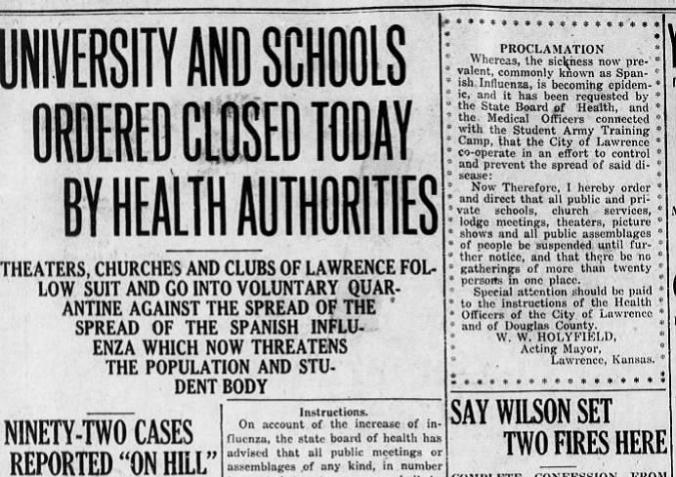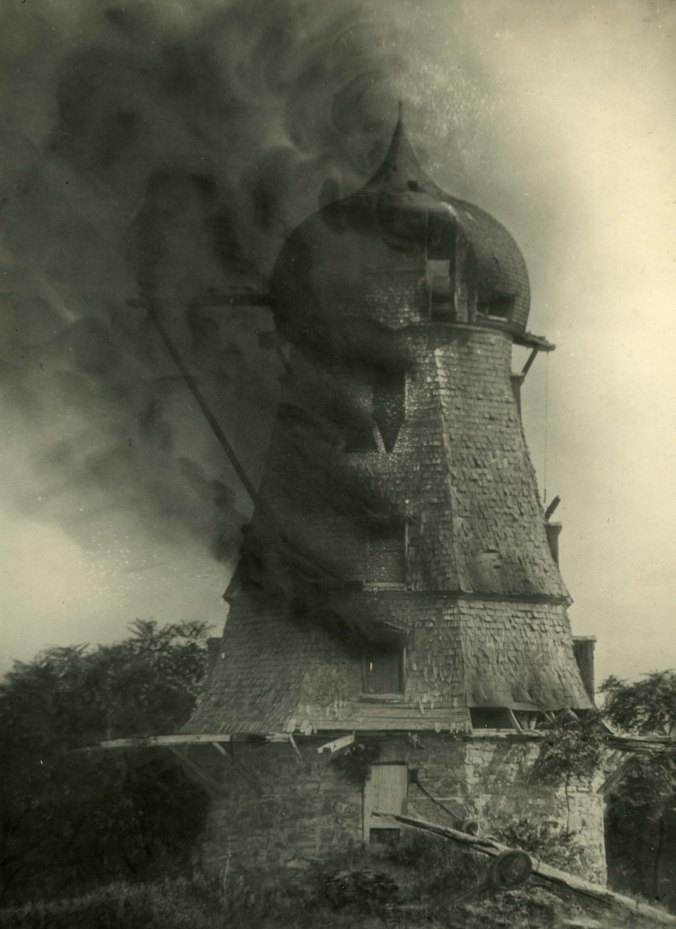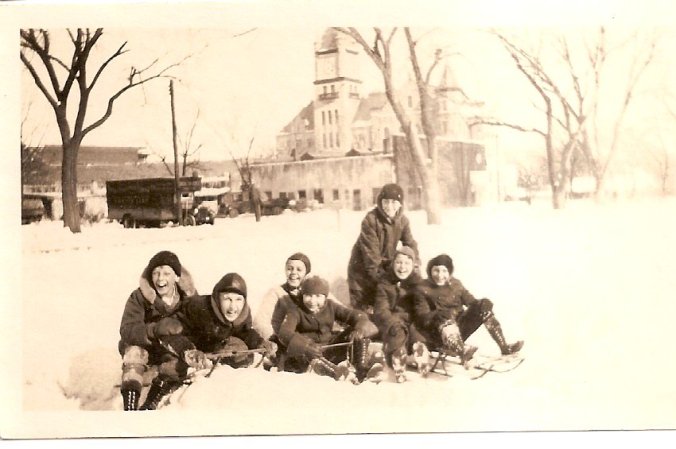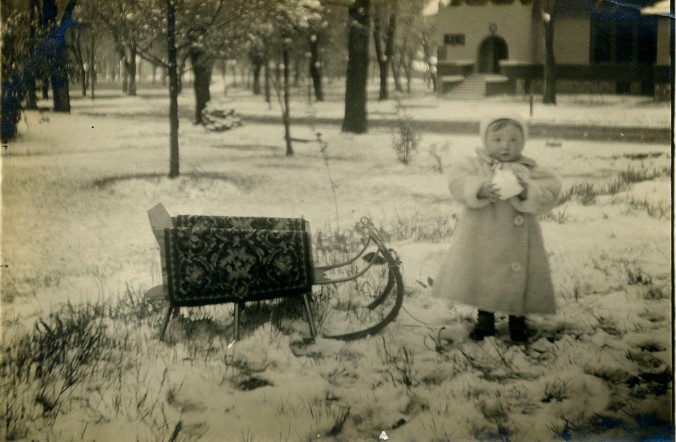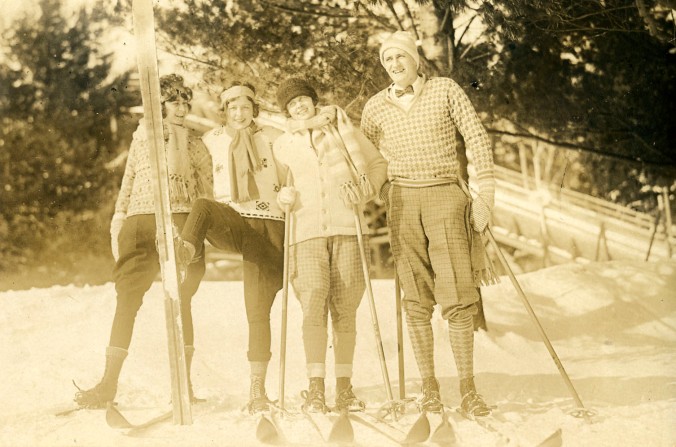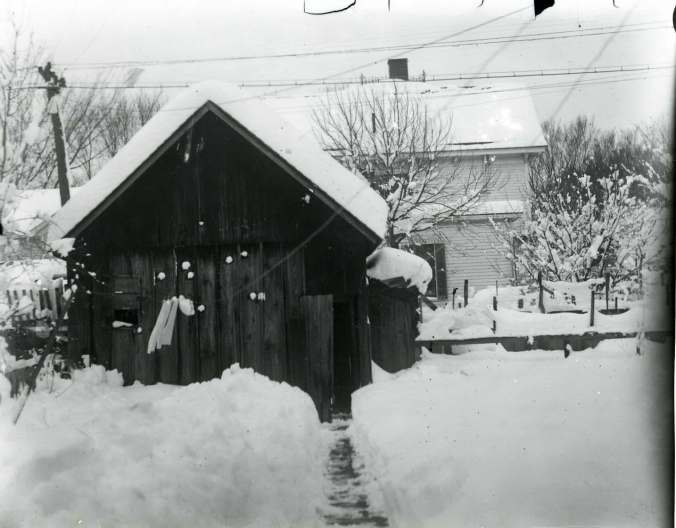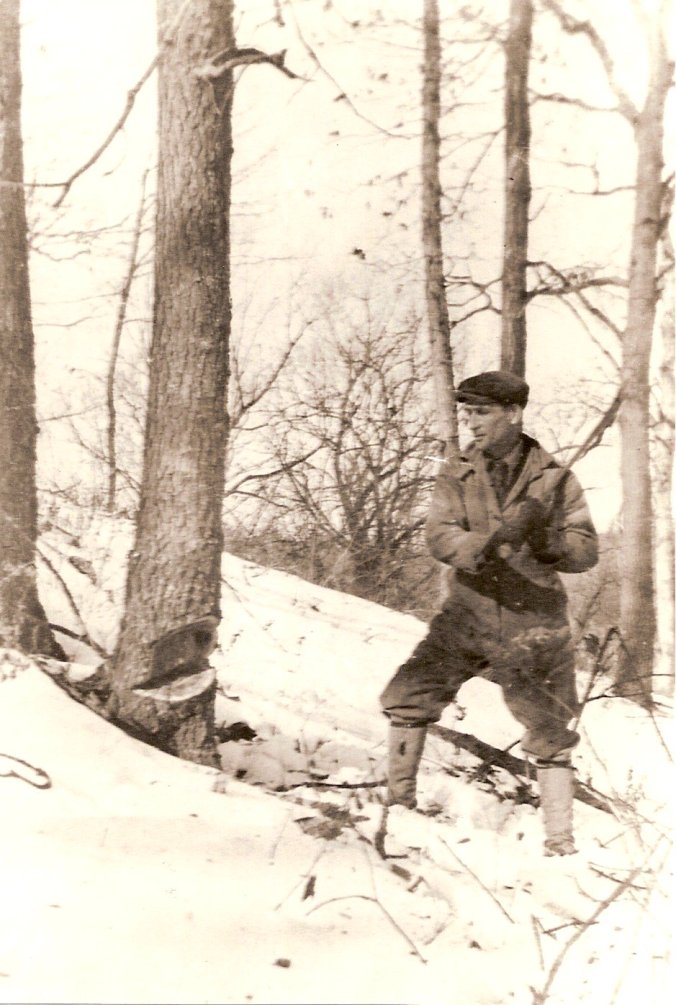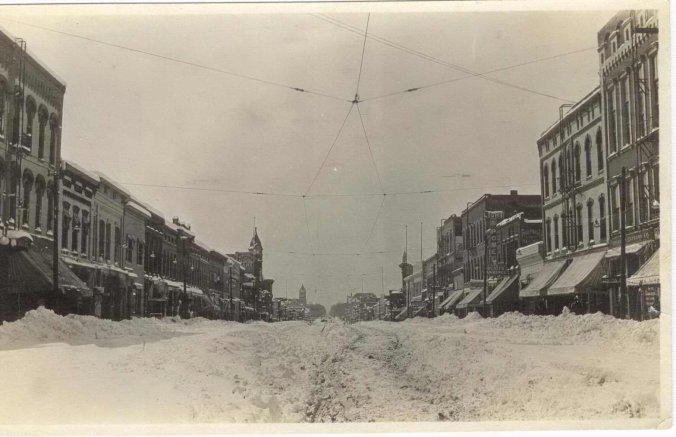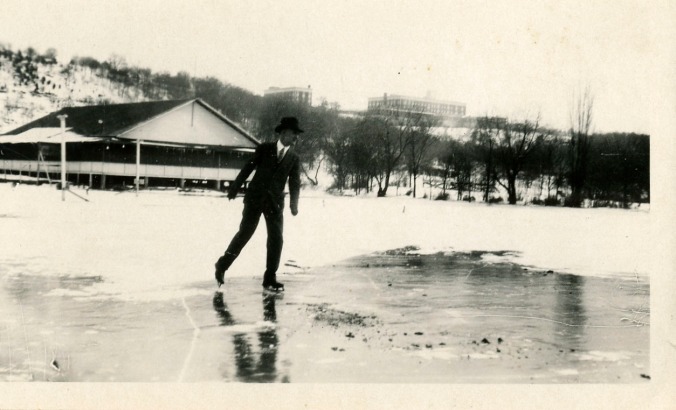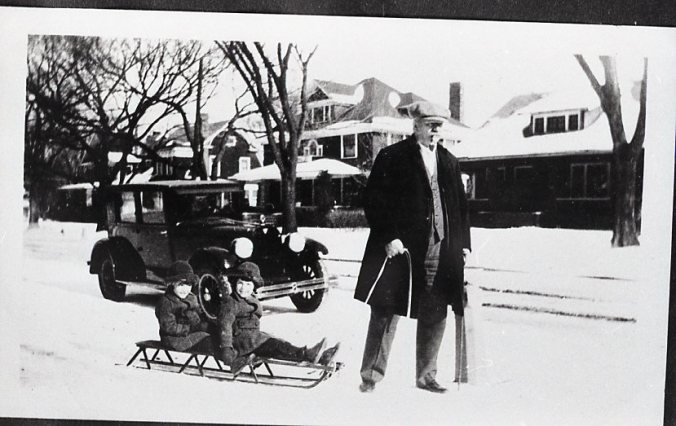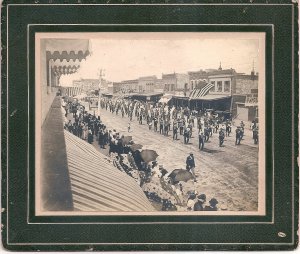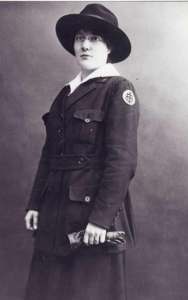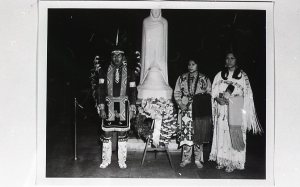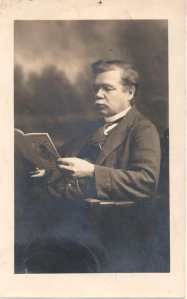Spring is a season for the senses: step outside and you’re likely to hear birds chirping, feel the sun on your neck, and smell flowers and newly cut grass.
But you can also get a sensory experience indoors at the Watkins. This week we unveiled a brand-new interactive display that allows young visitors to touch, smell, and see history like never before.

Interior of the Leeder store at 9th and Massachusetts streets in 1902. What did all this merchandise feel and smell like? Our new interactive display gives kids a sensory insight into early Lawrence. (Watkins collection.)
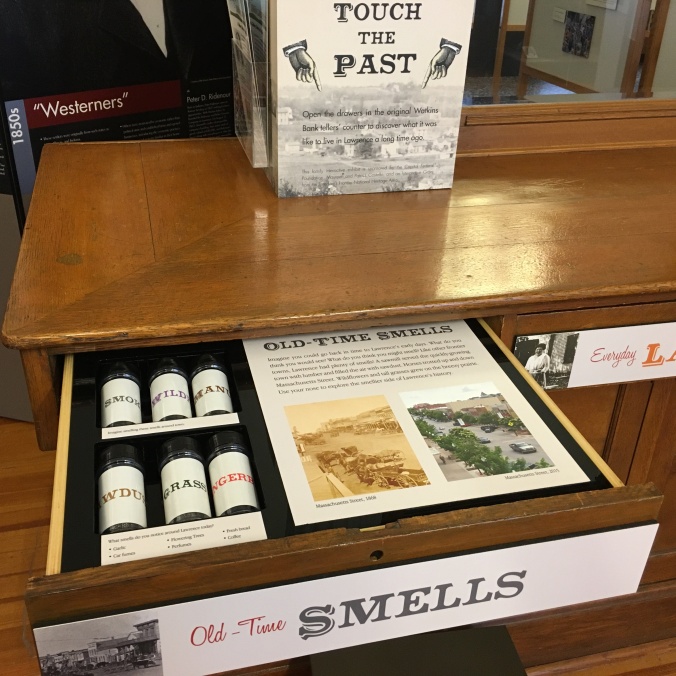
Located on the second floor and developed by Abby Magariel, Watkins education and programs coordinator, Life in Early Lawrence features six stations and a laminated guide designed for child visitors. Kids will pull out the original bank teller drawers and count old-fashioned money, learn about life as a Civil War soldier, and even smell some of the smells of 1800’s Lawrence! These are just a few examples of the sensory experience that awaits participants in this exciting interactive display.
Life in Early Lawrence offers ample opportunities for a unique learning experience, making it ideal both for class activities and free time with the family. So bring the kids to the Watkins for some hands-on (and nose-on) history!
